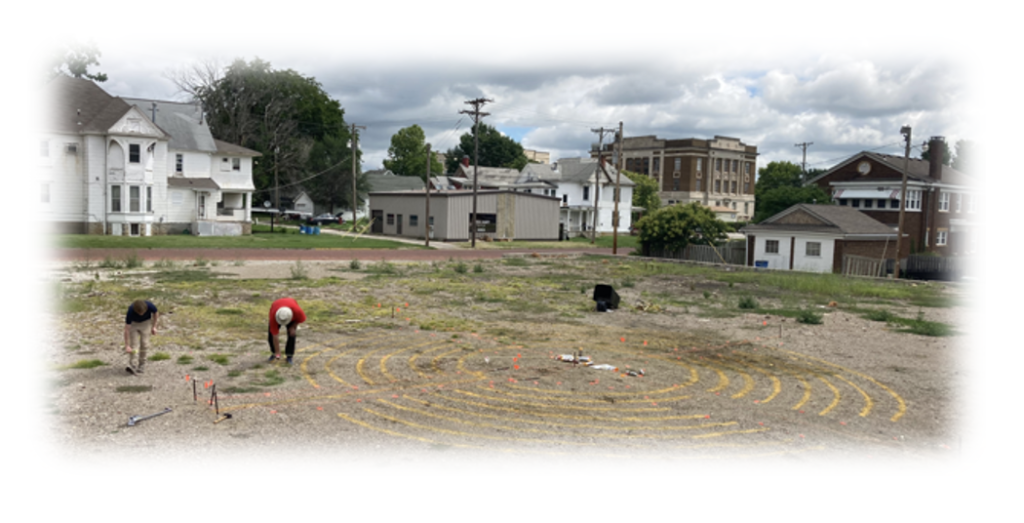
In nearly every culture, walking labyrinths are a single path to a center used for prayer and meditation, or just a brief walk, according to Pastor Christopher Eshelman of Fort Scott First United Methodist.
“We find examples all over the world, from petroglyphs to indigenous basket weavings, stamped coins and labyrinths themselves,” he said. “In this sense, a labyrinth is not a maze or a puzzle – there are no dead ends (and no Minataur!).”
Building a labyrinth in Fort Scott, was Eshelman’s idea.
“Walking labyrinths is one of my favorite spiritual disciplines and I’ve been building them for several years – everything from temporary chalk on concrete or painters tape on a gym floor to mowing them into fields or, in this case, arranging stone to form the path boundaries,” he said.
The Fort Scott Labyrinth was completed last month, and will be dedicated on May 28 at 11:45 a.m., right after the Methodist church service is over.
“It just really got finished in the last month or so and we are formally dedicating it on Sunday, May 28th with a brief ceremony, he said. “We added the benches and sign a few months ago using funds from a grant given by the Healthy Congregations program of the UMC’s Great Plains Conference. Anyone can use the space.”
The labyrinth is a place to meditate.
“It’s a personal favorite practice and it is a way of transforming the space from an abandoned lot into something beautiful,” Eshelman said. “This site, where people once bought food to nourish their bodies now serves as a space to nourish mind and spirit. It is a great way to engage people in walking, exercise, and spirituality as well as deepening the connection and cooperation between our two congregations.”
The labyrinth is sponsored by First Presbyterian Church and First United Methodist Church.
“The Presbyterians now own the land, which was the former site of Whiteside’s Grocery at 3rd and Crawford,” he said. “The Whiteside’s are longtime members of First United Methodist, where I now serve as pastor. With permission of their Sessions board, I and a few volunteers initially laid it out with marking paint and then gradually added stone – some is debris from the site and some is stone gathered and donated from nearby fields and projects by one of our members. What was once scattered now contributes to a place of wholeness.”
“It is a space where you can, quite literally, center yourself,” he said. “It really is what you make of it and what you bring to it. There is no wrong way to walk a labyrinth so long as you are respectful of the space and others who use it. One of my favorite experiences was a time I was trying to very seriously instruct a group of Cub Scouts in the ancient practice… and they did not care. They just wanted to play. When I finally got out of the way and let them runs and skip, they immediately started playing follow the leader and exploring the space. It was wonderful. Our design copies one that was laid in the floor of Chartres Cathedral in France between 1200 and 1220AD and used as a pilgrimage spot.”